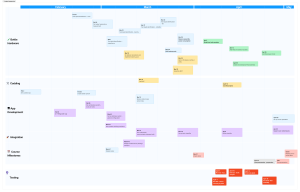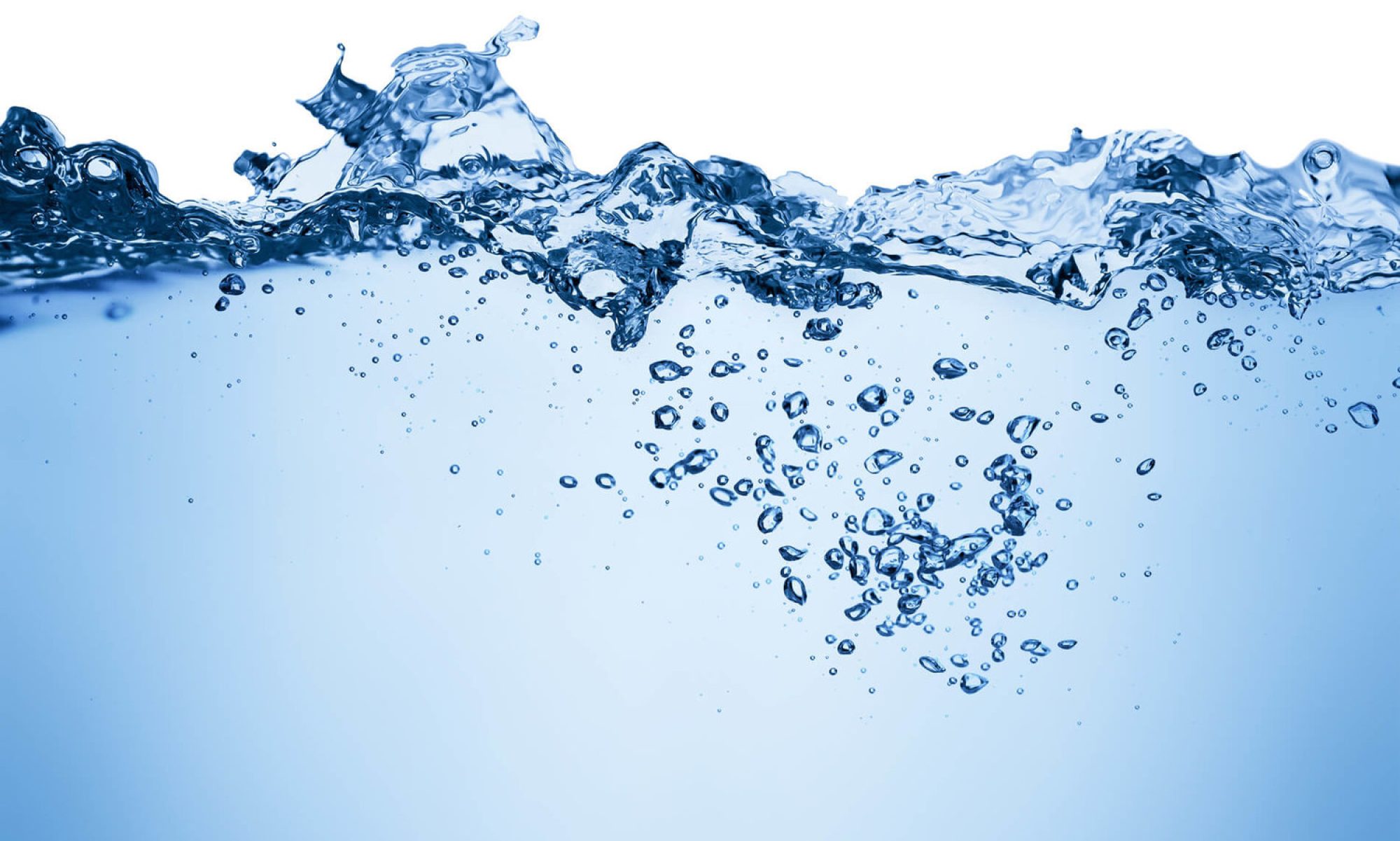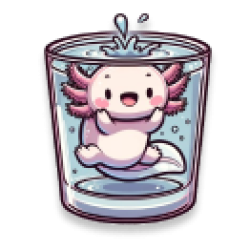https://drive.google.com/file/d/1yCA6a16mlX-ebjrBeiEj9fVXN8R3rkUr/view?usp=sharing
FINAL VIDEO
https://drive.google.com/file/d/1tTTH8wcZLuaa1efPko_5sIMshVhGlKjr/view?usp=sharing
Matthews Status Report
What did you personally accomplish this week on the project? Give files or photos that demonstrate your progress. Prove to the reader that you put sufficient effort into the project over the course of the week (12+ hours).
This week, I worked on the presentation by making the slides and preparing them. Along with that, I was also finalizing CADing and 3d printing parts for our final assembly.
We are currently on schedule
What deliverables do you hope to complete in the next week?
Next week, I’ll finish helping the team assembling the bottle and review any potential issues we have on our final assembly
Team Status Report 04/27/24
What are the most significant risks that could jeopardize the success of the project? How are these risks being managed? What contingency plans are ready?
The main risks are related to connections (solders breaking, sensors disconnecting). We are reinforcing our connections and using JHT connectors instead of soldering the sensors directly to a protoboard.
Were any changes made to the existing design of the system (requirements, block diagram, system spec, etc)? Why was this change necessary, what costs does the change incur, and how will these costs be mitigated going forward?
No
List all unit tests and overall system test carried out for experimentation of the system. List any findings and design changes made from your analysis of test results and other data obtained from the experimentation.
Capacitance test – We learned that the capacitance between different liquids didn’t change much, so we needed to use different metrics for classification.
Unit tests for temperature, tds, turbidity, and color sensors with different liquids. We found good variability between color, tds, and turbidity in our target liquids. We also found that the temperature sensor is consistent with what we expected.
Integration tests for the sensors once the system had been assembled – we tested the sensors in the bottle, and found the results from the unit tests remain.
Level testing for the ultrasonic testing – we tested that the level indicated by the ultrasonic sensor is consistent with the expected value. We also found that this could be used as a metric for bottle stability, and decided to use this instead of FSR’s. This allowed us to simplify our system and decrease energy expenditure.
Static code analysis for the Arduino code and JS code. Issues found (such as unreachable code and uninitialized values) were either mitigated or found to be false positives.
Connection test – we tested the connection between the app and the bottle, and found it to be stable.
Alan’s Status Report for 04/27/24
What did you personally accomplish this week on the project? Give files or photos that demonstrate your progress. Prove to the reader that you put sufficient effort into the project over the course of the week (12+ hours).
This week, I worked on our final bottle assembly. We have a new board, which should be more stable and less vulnerable to solders breaking, since it uses JHT connectors. I crimped connectors, tested sensor connections, and debugged solder and connection issues. I also worked on our final bottle, sealing sensors in place, moving the display and adding a new switch (for the battery circuit) to the taller bottom compartment.
Is your progress on schedule or behind?
On schedule
What deliverables do you hope to complete in the next week?
Next week, I’ll finish the battery circuit and clean up any final issues with the bottle, to make sure we’re ready for a successful demo.
Erin’s Status Report 4/20
What did you personally accomplish this week on the project? Give files or photos that demonstrate your progress. Prove to the reader that you put sufficient effort into the project over the course of the week (12+ hours).
This week I resoldered the bottle hardware due to a microcontroller breakage. I also cadded the bottle and worked on the calendar page of the app
Is your progress on schedule or behind?
On schedule
What deliverables do you hope to complete in the next week?
I need to work on the level seperation between different liquids on the app
As you’ve designed, implemented and debugged your project, what new tools or new knowledge did you find it necessary to learn to be able to accomplish these tasks? What learning strategies did you use to acquire this new knowledge?
I realized that hand soldering is really difficult to maintain and tends to break especially when the wires are tiny. We learned about a new connector that is tempory so things should not break as often
Team status report for 04/20/2024
What are the most significant risks that could jeopardize the success of the project? How are these risks being managed? What contingency plans are ready?
We had a few issues with fabrication, wires breaking, sensors disconnecting, and fitting the assembly in the bottom compartment. We resoldered our assembly, with a much more reinforced structure, and are printing a slightly taller bottom compartment.
Were any changes made to the existing design of the system (requirements, block diagram, system spec, etc)? Why was this change necessary, what costs does the change incur, and how will these costs be mitigated going forward?
We moved away from a pressure plate and to an FSM based on the ultrasonic sensor to measure bottle stability. This will simplify the system, reduce weight, and slightly decrease power expenditure.
Updated schedule:

Alan’s status report for 04/20/24
What did you personally accomplish this week on the project? Give files or photos that demonstrate your progress. Prove to the reader that you put sufficient effort into the project over the course of the week (12+ hours).
This week I worked with Erin to resolder our assembly and produce the bottle we will use in the final demo. I also got the display working, and it shows liquid level, temperature, and classification. I then wrote and FSM to detect when the bottle is stable based on the stability of the ultrasonic sensor’s reading, eliminating the need for a pressure plate. Finally, I designed the integration tests we are performing to validate our final product
Is your progress on schedule or behind?
On schedule
What deliverables do you hope to complete in the next week?
Next week, I’ll continue testing the final bottle, will add more liquid samples, and the capability for user-added liquids.
As you’ve designed, implemented and debugged your project, what new tools or new knowledge did you find it necessary to learn to be able to accomplish these tasks? What learning strategies did you use to acquire this new knowledge?
I’ve learned a lot about different sensors used to test and identify liquids, their principles of operation, and their libraries. I mostly learned this by googling, reading reviews, forums, and wikis. I also learned about bluetooth low energy, again, mostly by googling, reading forums and tutorials. Finally, I learned some things about hardware, fabrication, and durability, mostly by talking to classmates and trial and error as we build our product.
Erin Status Report 4/6
What did you personally accomplish this week on the project? Give files or photos that demonstrate your progress. Prove to the reader that you put sufficient effort into the project over the course of the week (12+ hours).
- This week I soldered the microcontroller as well as the sensors onto a blank pcb board. I also fixed the app to work with the BLE sense Arduino. This week was really rough and we had to resolder the sensors multiple times due to 2 Adafruit nrf’s burning out.
Is your progress on schedule or behind?
On schedule
What deliverables do you hope to complete in the next week?
I need to fix a water level bug as well as change hte color for the liquid depending on what the liquid is. I will also support matt with cadding
Now that you have some portions of your project built, and entering into the verification and validation phase of your project, provide a comprehensive update on what tests you have run or are planning to run. In particular, how will you analyze the anticipated measured results to verify your contribution to the project meets the engineering design requirements or the use case requirements?
We need to do water level tests to make sure that the app and bottle are calibrated. This is really important at this point bc we need to switch cm -> ounces in order for the UI to make sense.
Mattherw’s status report 4/6
What did you personally accomplish this week on the project? Give files or photos that demonstrate your progress. Prove to the reader that you put sufficient effort into the project over the course of the week (12+ hours).
This week, I worked on getting the prototype ready for the MVP demo. I worked on 3d printing an entirely new bottle due to complications we had regarding the bottle starting to leak liquid despite the sealant and glue that we had used. I also helped get potential parts we would need, such as voltage regulators to power down the voltage needed from 9v to 5v or 3.3v depending on the circumstances. I also worked on the physical prototype with the team(as a team effort)
Is your progress on schedule or behind?
On schedule
What deliverables do you hope to complete in the next week?
We wish to have a new model of the bottle prototyped so that we can 3d print it, as well as making sure that we have enough space to fit in the sensors that we could not fit in on our MVP, such as the color sensor.
Now that you have some portions of your project built, and entering into the verification and validation phase of your project, provide a comprehensive update on what tests you have run or are planning to run. In particular, how will you analyze the anticipated measured results to verify your contribution to the project meets the engineering design requirements or the use case requirements?
We are planning to run tests on ultrasonic accuracy, determining if the amount of liquid that is currently being held is reliably close to the amount that is being estimated by the ultrasonic. The turbidity and tds will be used to help differentiate liquids by comparing them to the values that we got through reference liquids such as coffee, milk, water and such. The color sensor will be used to find a case where there are two different liquids with similar turbidity/tds values and differentiate them through visuals.
We will test these results in a classifier and check whether the results are within a reliable level of tolerance, and calibrate according to the data that we receive in return.

